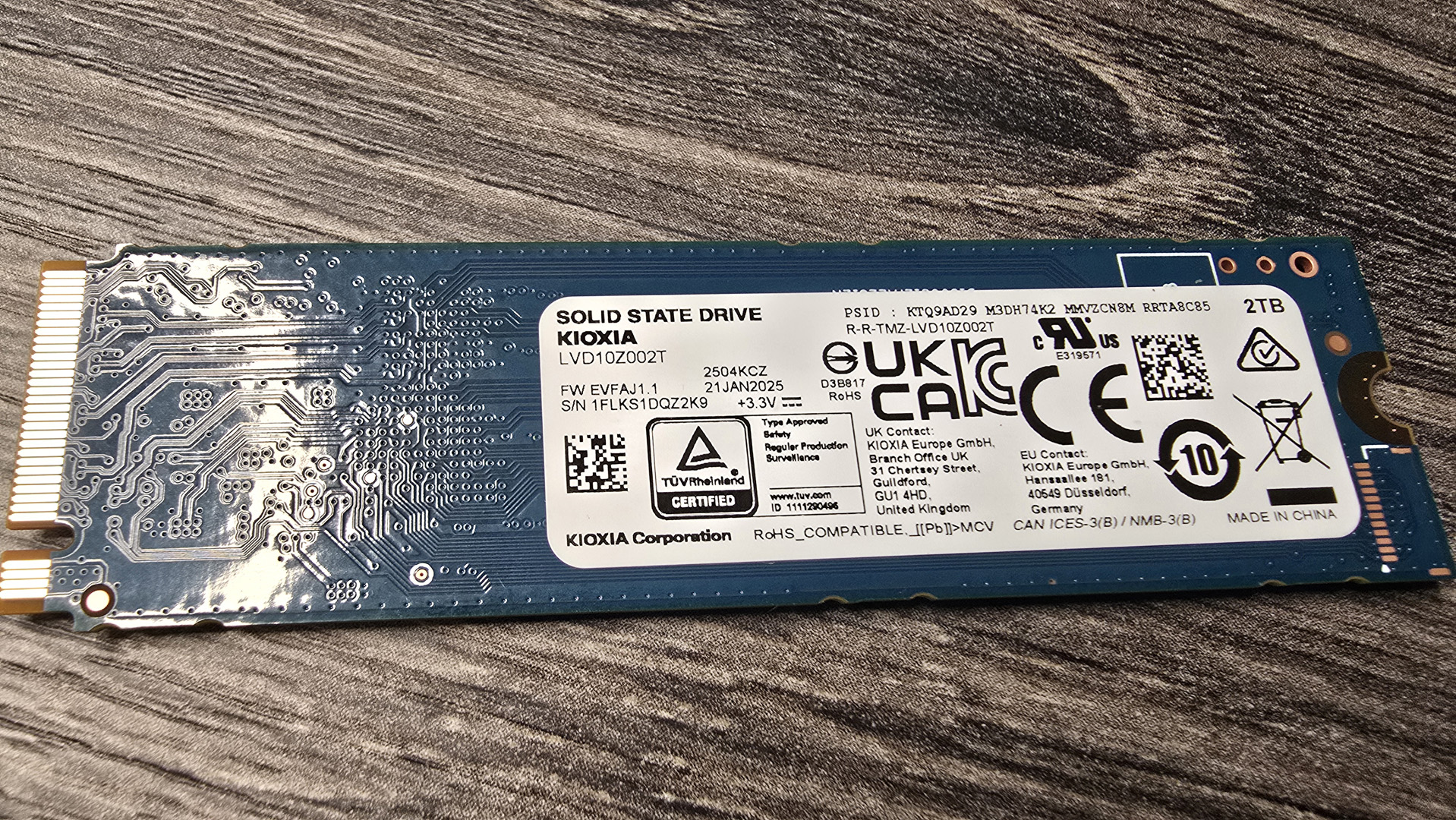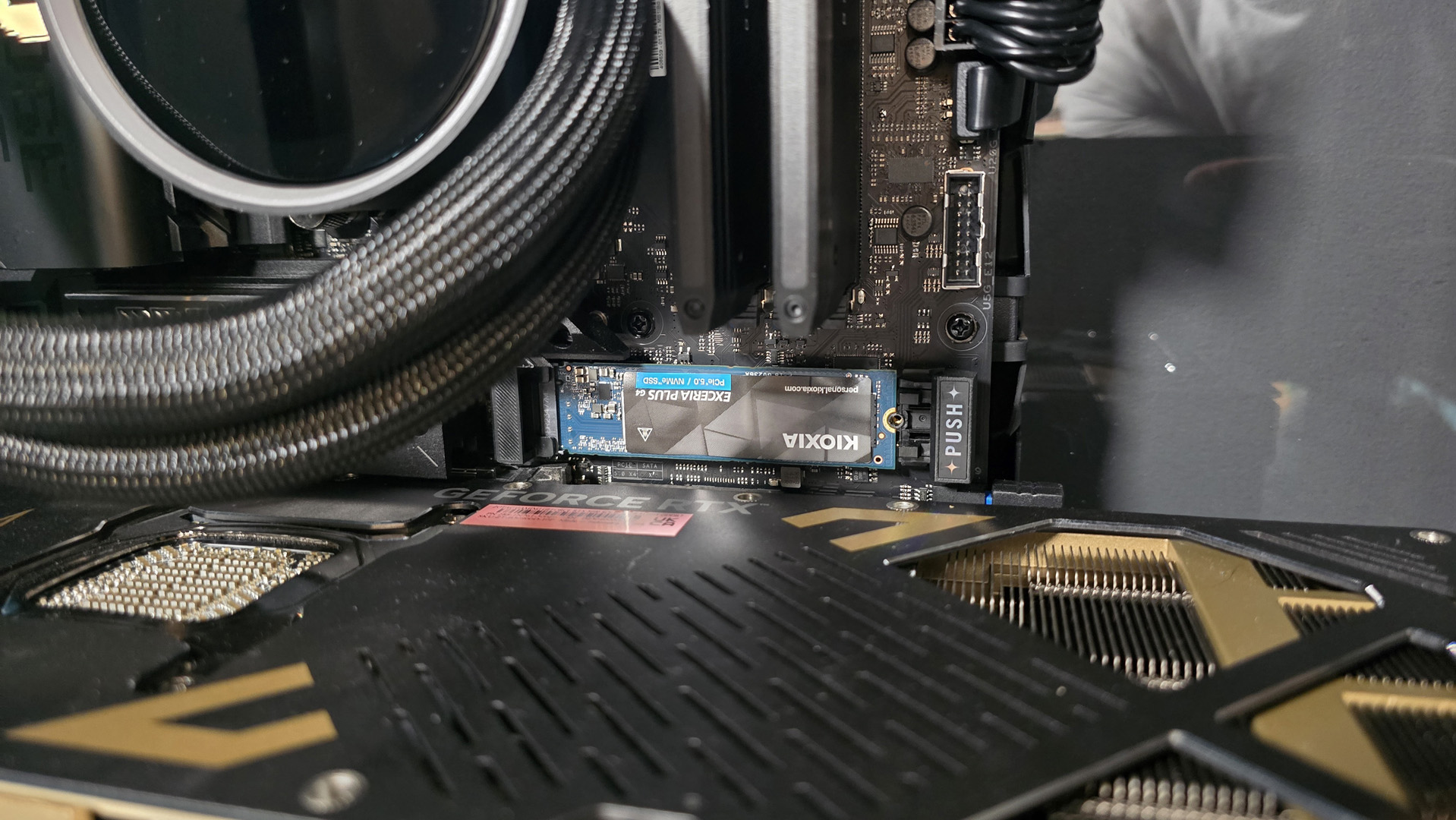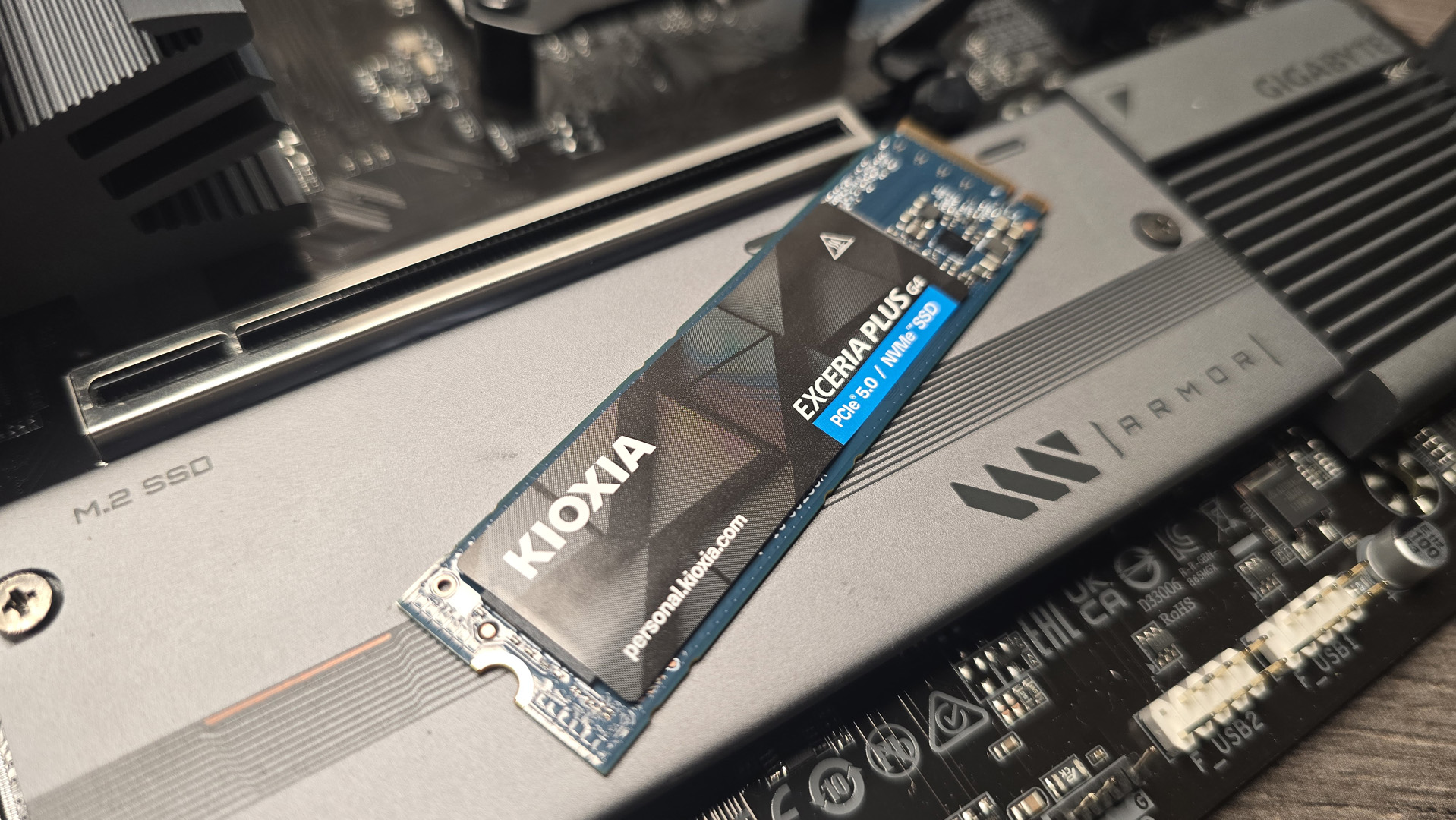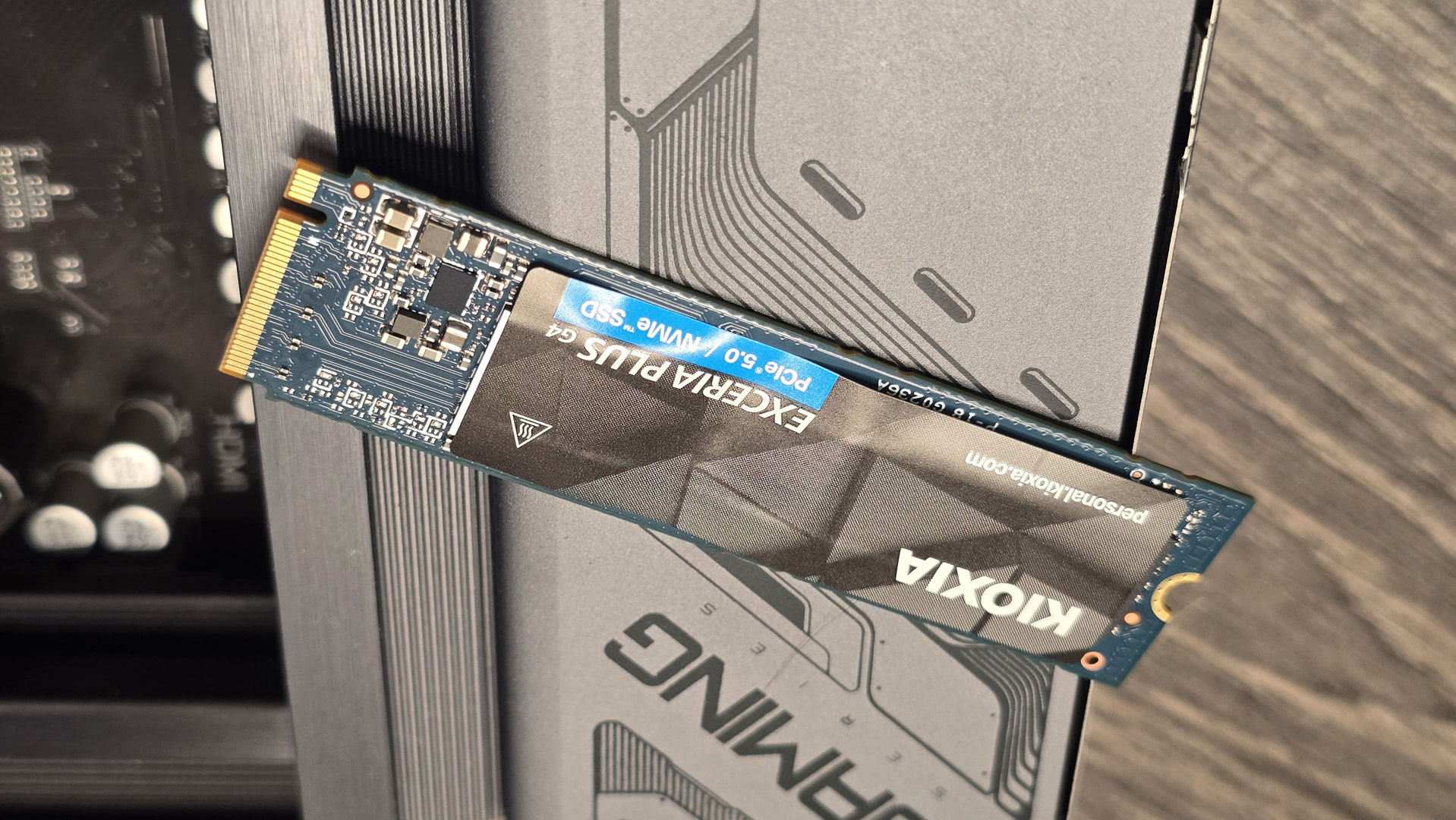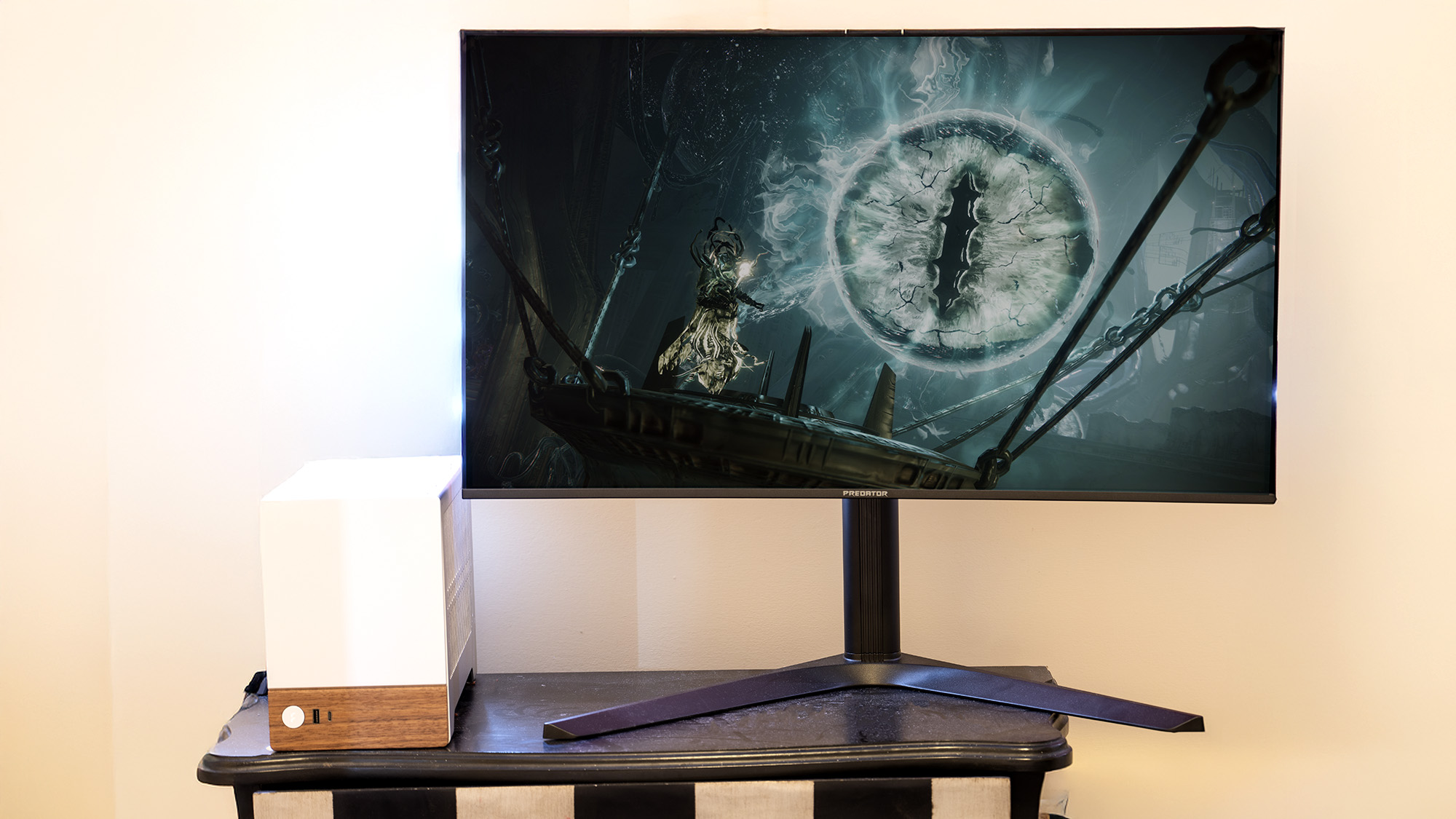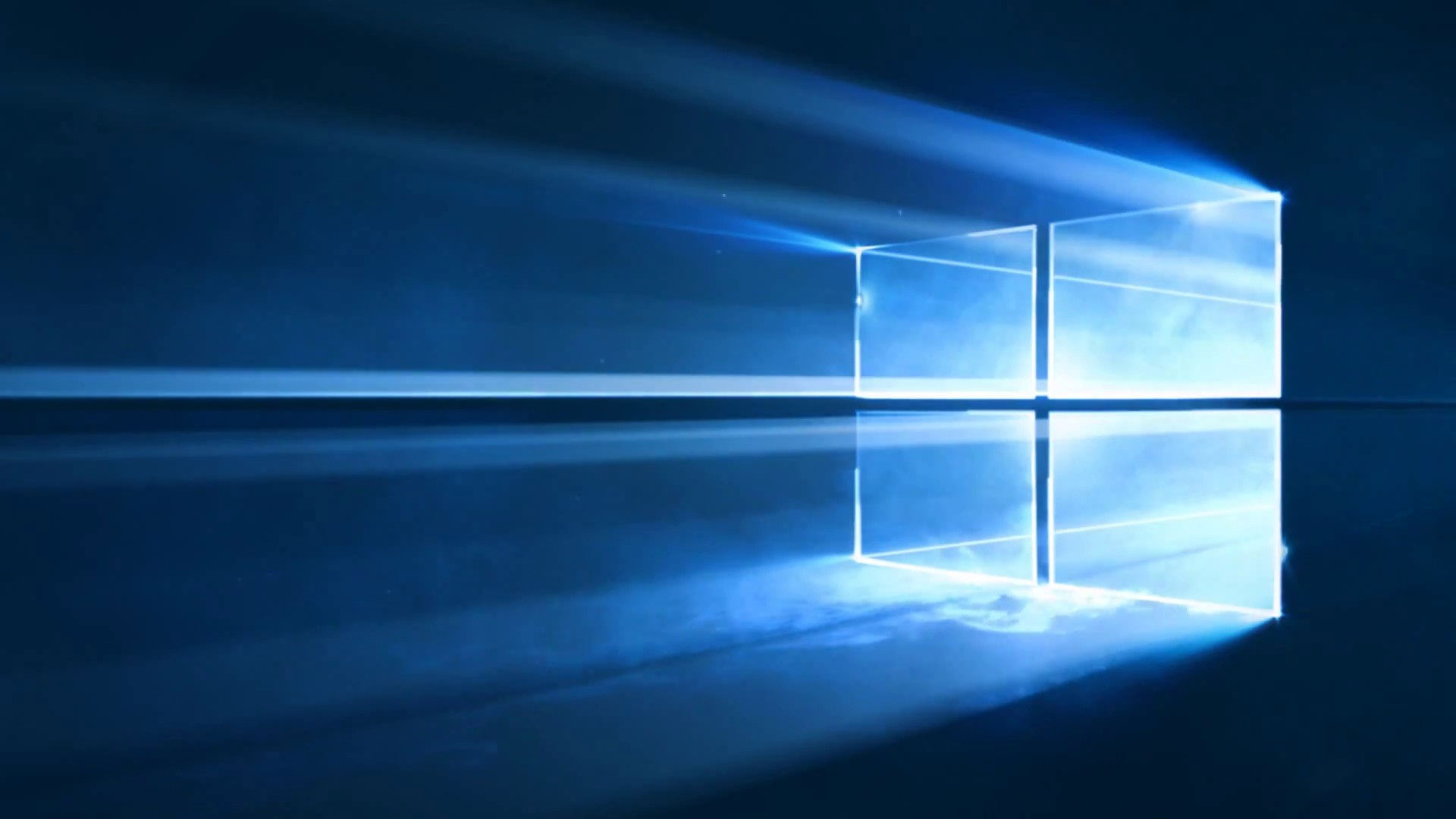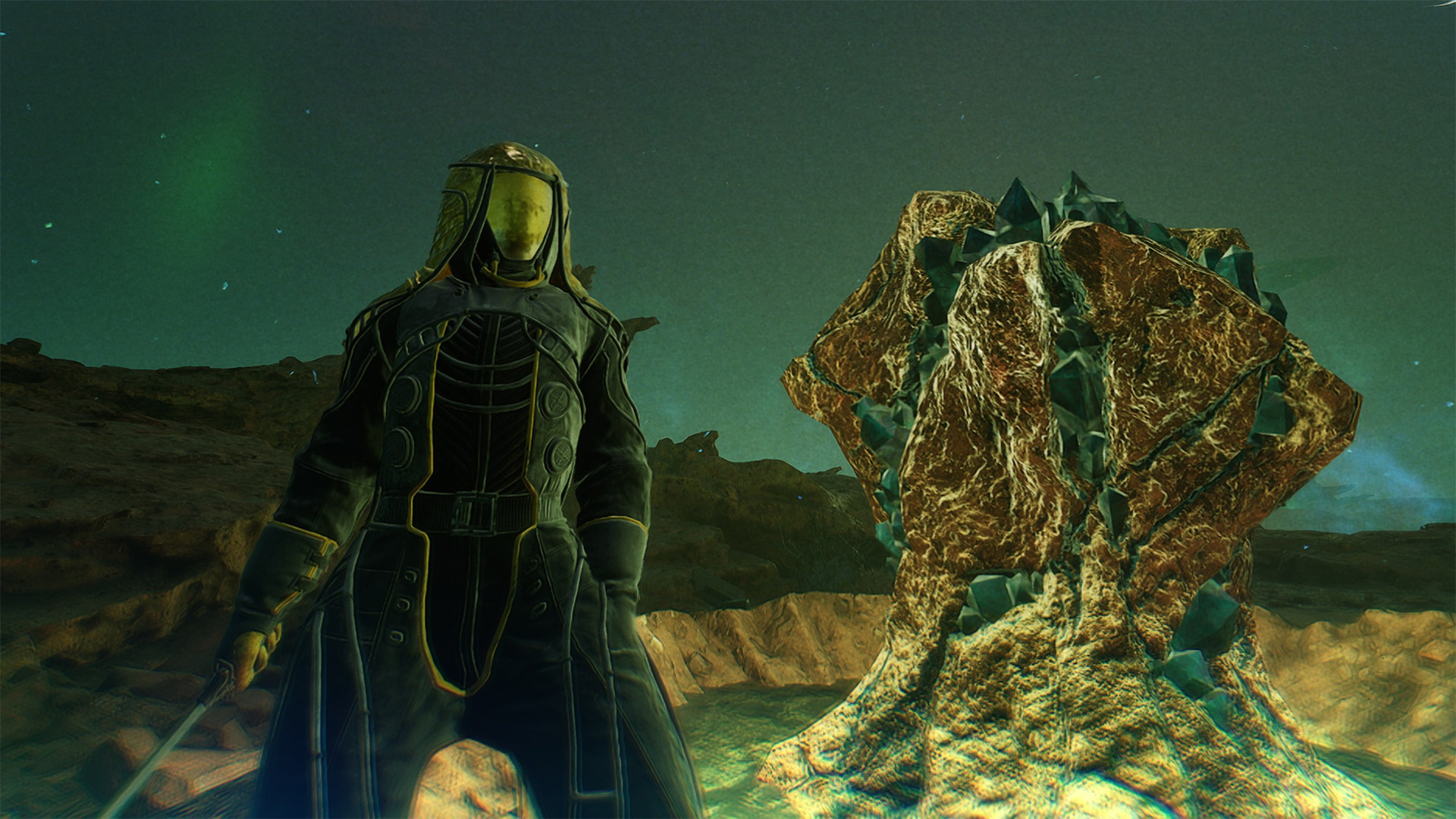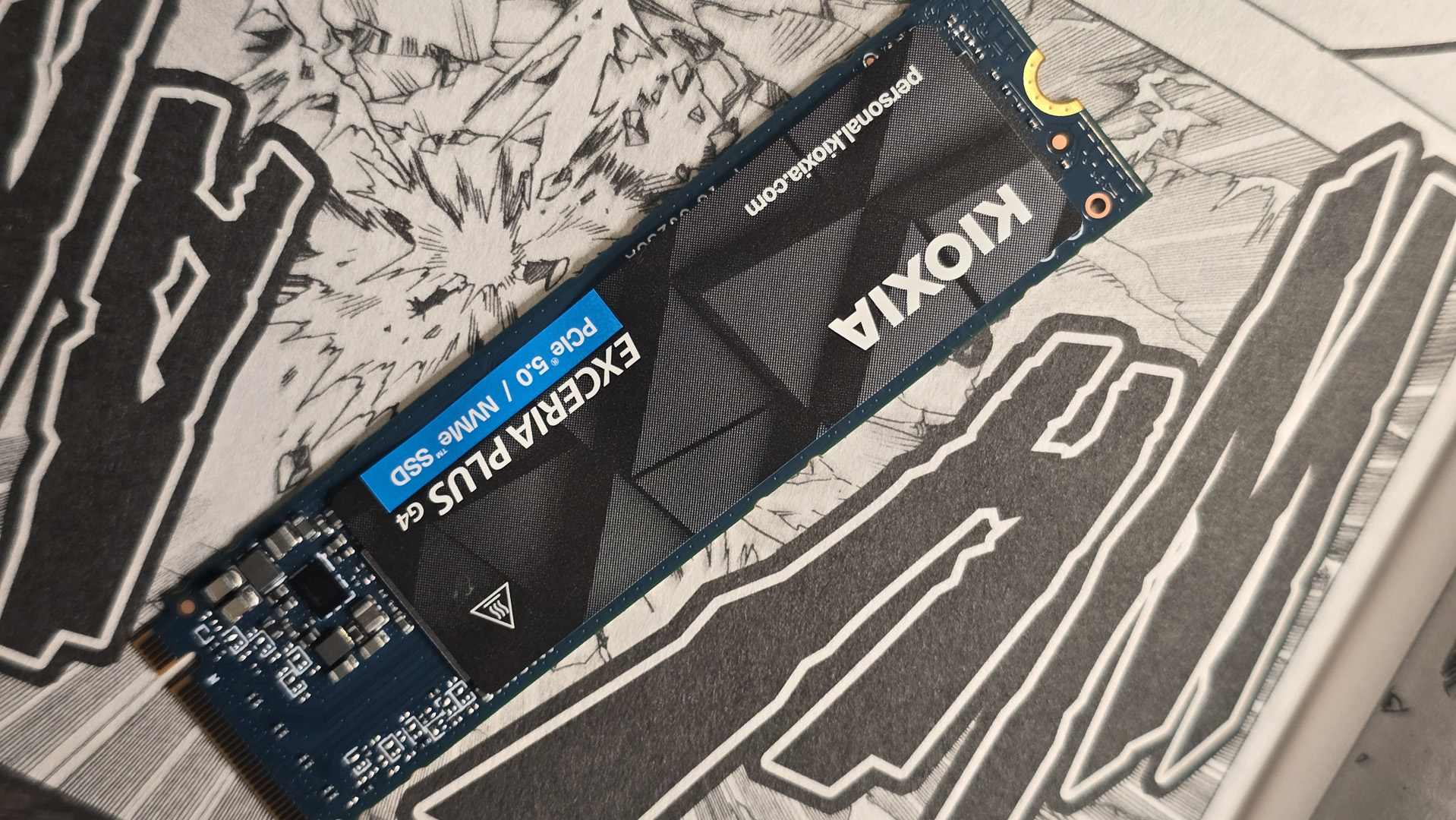
From flash maker to drive creator, the price just ain't right on this one.
The Phison E31T drives are finally here and arriving by the dozen. Here, I have Kioxia’s Exceria Plus G4, and it is quite the curious thing. Powered with a mix of both Kioxia flash and Phison controller tech, it’s aimed squarely at those looking for an entry-level PCIe 5.0 drive. One that doesn’t break the bank and yet still delivers. This isn’t a top-tier WD Black SN8100 or similar; instead, it’s all about efficiency, about reducing the need for heatsinks, and for wider compatibility with laptops, consoles, and other devices that just don’t have the luxury of high airflow, like us humble PC gamers have.
Kioxia as a brand, although relatively fresh, is not new on the scene. It’s got quite the history; once being a division inside of Toshiba, it was spun off as its own entity in 2018 before rebranding to Kioxia the following year. By that point Toshiba had already absorbed the now defunct OCZ, and the newly hatched Kioxia had picked up Lite-On as well in its upward ascent.
Traditionally, though, Kioxia’s always been seen more as a NAND manufacturer in a B2B capacity than as a direct drive developer for us humble consumers. It’s worked quite closely over the years with the likes of Western Digital and SanDisk to deliver some truly exceptional flash memory to its PCIe drives, and Corsair has dabbled with it from time to time as well.
When its PR team reached out with a sample of the brand-new Exceria Plus G4 drive, well, it was too tempting to pass up. Surely, I thought, if anyone could make a compelling SSD, build something to topple the titans that sit atop our best SSD list, these were the good folk to do it.
Capacity: 2 TB
Interface: PCIe 5.0 x4
Memory controller: Phison E31T
Flash memory: Kioxia 218-Layer BiCS8 TLC NAND
Rated performance: 10,000 MB/s sustained read, 8,200 MB/s sustained write
Endurance: 1,200 TBW
Warranty: Five years
Price: $225 | £180
It’s the beating heart of this thing that’s the most curious addition here. Phison’s E31T controller. It’s not the first time I’ve tested it, as we saw it inside of Corsair’s MP700 Elite as well. It’s effectively based off the design of the Phison E26 controller, but with some major changes to bring that efficiency way up. Phison’s shifted the manufacturing process over to TSMC’s 7 nm lithography, got rid of all of the DRAM cache support, and split total max bandwidth in half as well.
Now, theoretically, that does quite dramatically impact sequential speeds, but to be clear, that is a very small part of what makes a good SSD these days (and honestly, it’s more marketing hype than anything else past a certain point, for gaming at least).
As for the NAND, as you can imagine, Kioxia is using its own here, in the form of a 218-layer BiCS8 TLC. It’s not quite as dense as some of the 276-layer stuff we’ve seen come out of the more premium flagship PCIe 5.0 drives, like Crucial’s T705, but it does seem to be the de facto smart choice for the E31T. In fact, it’s identical to Corsair’s MP700 Elite as well. The only drive that I’ve seen so far that doesn’t use it is Crucial’s P510, which is using (its own) Micron 276-layer TLC instead.
Other top-line stats remain fairly consistent here too. You still get the same M.2 2280 form factor, the same 5-year warranty, that typical 1,200 TBW endurance rating, and that’s about it. Oh, and there’s no heatsink option either; Kioxia’s done away with that entirely. As for pricing, you can pick one of these up for around $225 in the US or £180 in the UK.
Performance, then, is quite predictable on this one. Sequentials fall in the comfortable range of 10.2 GB/s on the read and 8.6 GB/s on the write; it’s ever so slightly faster than the MP700 Elite, although it does chug a little in contrast to Crucial’s P510 (even in its 1 TB configuration). Random 4K performance, however, does feel a little lackluster. Whatever Corsair’s doing on the firmware side is paying dividends, as the Kioxia just cannot match it on random 4K writes with 318 MB/s to 336 MB/s. Similarly, its read speed is markedly lower as well.
3DMark does tell a different story, however, with the G4 seeing a serious uptick in contrast to the MP700 Elite, a combination of improved SSD bandwidth and reduced latency in those tests. Interestingly, it’s faster in Final Fantasy XIV: Shadowbringers as well, with a respectable load time of 7.331 seconds across all scenes.
✅ It’s on offer and you need a cool PCIe 5.0 drive: The Exceria Plus G4 delivers some solid sequential and random 4K numbers throughout, making it ideal for most workloads. If you’re after a cool, quick 5.0 drive with wide compatibility, this is the one.
❌ It’s not on offer and you need something a bit ‘more’: Given how similar its core hardware is to some of its competition and how close the performance is, you’ll be better off just grabbing the cheapest drive.
Temperatures, similar to the Corsair, are just outstanding for a 5.0 drive. Max temp under IOMeter’s seriously intense load topped out at just 60 °C. Not quite the 55 °C that the MP700 Elite managed, but seriously close, and there is a 2-degree difference in ambient temperature to consider there as well.
The only issue I have with it is the price. In fact, as Corsair has had more time in the marketplace, it’s had time to adjust that pricing quite significantly; you can currently pick up the MP700 for as low as $180. In contrast, the Exceria Plus comes in nearly $45 higher for a non-heatsinked drive. That’s an issue, as it seriously ramps up the cost per GB in the US. Impressively, its UK price is lower, but, given how tight the performance is between these two and how similar the hardware is, you’d be best to pick the one that’s on offer in your region.
Perhaps it’s because Corsair’s MP700 Elite has been out for so long already or that we’ve seen E31T drives land in abundance recently. Or perhaps it’s because epic drives like the SN8100 have just ripped up the score sheet on what makes a good SSD a good SSD. But right now, the Kioxia Exceria just doesn’t feel like it’s enough. Even though it’s utilizing its own flash, it’s not delivering anything more than its competitors with that controller, and given that price increase on top of that and the sluggish arrival of it to market, it makes it hard for me to really get excited about it. Is it a good drive? Yeah, sure, it’ll do the job; you won’t be disappointed, that’s a fact, but that’s it.
